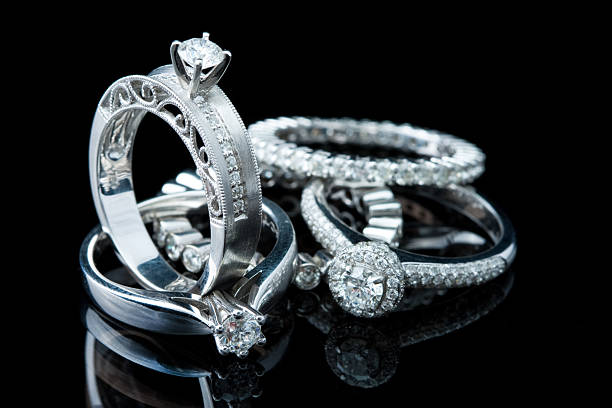
It isn't until you start looking seriously for the perfect engagement ring that you realize how many details there are to consider. Yes, you want a beautiful stone in a cut that complements your personal style, but there are other factors to consider that you may not have considered before. One example is deciding between a high-set and a low-set engagement ring.
It's obvious that knowing more about each style will help you decide whether you want a high-set or a low-set engagement ring. For many, the choice between these two aesthetics is simply a matter of personal preference; however, for others, weighing the pros and cons of each design is helpful in determining which setting works best overall.
The height of the center stone off your finger distinguishes a high-set engagement ring from a low-set engagement ring. A high-set ring has prongs that extend upwards, elevating the center stone and leaving a significant amount of space between the culet (the bottom pointed tip of a diamond or stone) and the band. The center stone in a low-set ring is lower and closer to the finger and band.
Examine a ring from the side to determine whether it is low or high set. It's a high-set ring if the center stone appears elevated. The stone is low set if it sits low on the band.
High-set engagement rings appear larger and more flamboyant than low-set rings. If it's visual appeal you're after, a high-set engagement ring is ideal. The ring's high profile draws attention to the center stone, making it appear larger than it is.
A higher setting may make a stone appear more gleaming. Some people believe that a high set will give the diamond or gemstone more brilliance and make it appear larger because there is more space for light to shine through the stone.
Another benefit? These settings are typically better suited to a wide range of wedding bands. The space beneath the stone allows an engagement ring or other ring to sit snugly against a band.
The disadvantage of this style is that it can easily catch on almost anything (think about your hair or a wool sweater). This is not only inconvenient, but it can also damage your engagement ring. This may eventually compromise the stone's integrity and result in cracking or chipping. So, if you're thinking about this setting, be extra cautious when wearing your ring on a daily basis.
A low-set engagement ring may appear different than a high-set one, but it has its own benefits, particularly in terms of comfort and durability. This setting is more secure and less vulnerable to accidental damage. Because the stone is lower, it is less likely to become entangled in things.
If you want to use heirlooms or more delicate gemstones, low settings are also more protective. So, if you spend a lot of time working with your hands, these might be the way to go. If you're a gardener who wants to wear your engagement ring all the time, this is the setting for you.
One of the most significant disadvantages of a low-set engagement ring is that it is not typically a versatile style. This style is difficult to incorporate with larger gemstones. There are also fewer options for integrating the stone into the overall ring design, and wedding bands may need to be curved or designed to match and avoid a gap between the two rings.
High-set engagement rings are ideal for the bride who wants a larger, eye-catching look. Low-set engagement rings are by far the better choice for anyone who leads an active lifestyle or works with their hands frequently.
Choosing an engagement ring style is a personal preference, and both high-set and low-set styles can be stunning. Finally, you should consider whether sparkles and a flashier appearance are more important to you. Or are you more concerned with finding a ring that won't snag on every single sweater you own? Whatever the case may be, you can find a suitable option in either style.
Sell your diamonds with ease with Diamond Registry’s comprehensive approach and vast global industry connections to help you find the best buyer for your diamond fast. Visit www.diamondregistry.com/sell-your-ring to take your first step to fast, easy and reliable way of selling your diamond.
Want to check and calculate diamond per carat instantly? Go to DR’s diamond price calculator to know how. Reliable and trusted carat calculator in the diamond industry since!

